Are business bank loans the right fit for you? The pros & cons every M’sian SME should know.
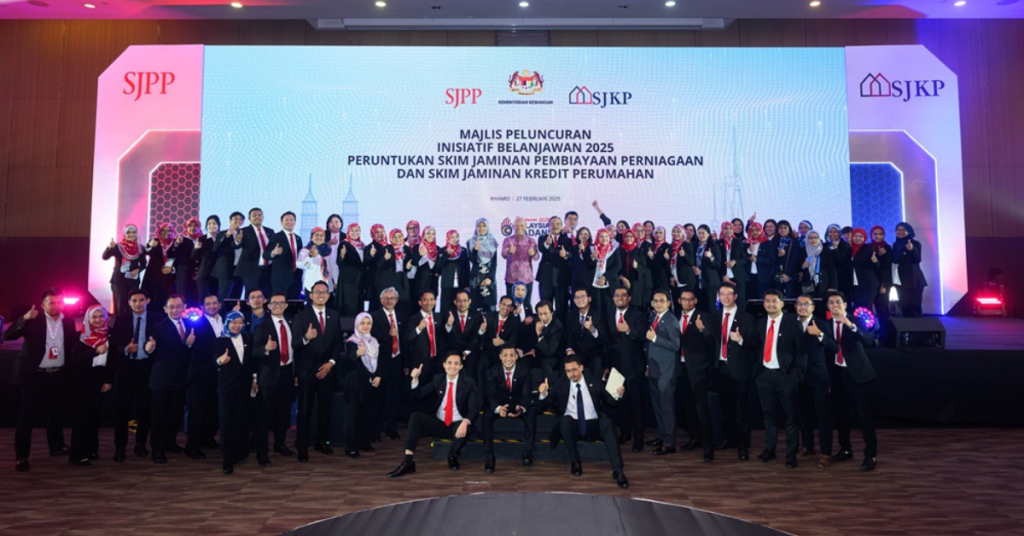
[This is a sponsored article with Syarikat Jaminan Pembiayaan Perniagaan (SJPP).]
Disclaimer: This article is for educational and informational purposes only. It is not intended to be a substitute for financial advice. Readers are encouraged to do their own research before arriving at any conclusions based solely on this content. Vulcan Post disclaims any reward or responsibility for any gains or losses arising from the direct and indirect use and application of any contents of the written material.
The topic of business loans is a polarising one.
Ask different business owners and each may give you varying answers, from “It’s necessary for growth,” to “Avoid them like the plague.”
As a business owner, though, you should know your company best and be able to make the right financial calls for its growth and sustainability.
Here are some perks and drawbacks of getting a business loan from a bank, so you can decide if taking one up will be the right fit for your business.
The perks
1. Generous loan amounts with attractive interest rates

Bank loans typically offer a larger amount compared to other financing alternatives such as online lenders approved by the Ministry of Housing and Local Government (KPKT).
And as opposed to crowdfunding where there is a chance that you might not hit your fundraising targets, the money that you can get from a bank loan is as stated on the agreement.
The better your credit score, the higher you may be able to negotiate the borrowed amount.
Not only that, the interest rate for bank loans tends to be lower than other financing alternatives such as venture capitals or private loans.
Dictionary time: Private loans are loans given to an individual or company by a private entity. This could be a private organisation, a wealthy individual, or even friends and family.
Interest rates are also typically fixed upon application. The bank will not, for instance, take a percentage of your profits or ask for shares in your company.
2. Longer terms
Bank loans can also be paid back over an extended period of time.
These are usually in monthly instalments, as opposed to online lenders who may request weekly or even daily payments over the course of one to two years.
Banks on the other hand offer the choice of either a short or long-term loan payment plan.
For instance, Alliance Bank’s microfinance targeted at MSMEs has a repayment range of one month to up to seven years.
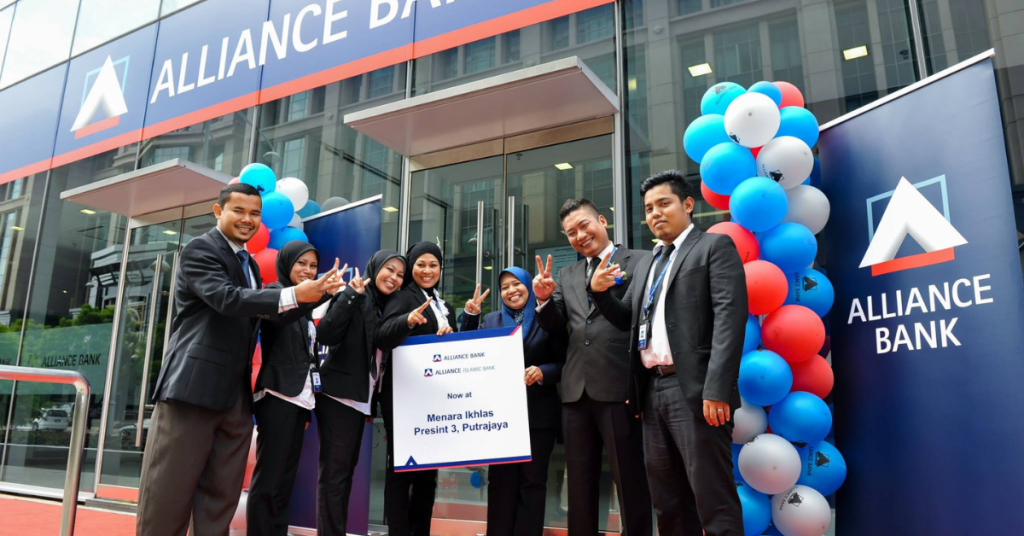
Long-term loans usually enjoy lower interest rates as opposed to short-term ones, on top of also having lower monthly payment costs.
This also lends itself to being able to borrow larger amounts as required.
3. Flexible usage
Bank loans are also flexible in the sense that borrowers are granted the freedom to allocate their newly-acquired funds as they see fit.
This is in contrast to venture capitals or angel investors who may impose restrictions on what the funds can and cannot be spent on.
Dictionary time: Angel investors are individuals who finance startups in the early stage of the business, typically in exchange for equity or convertible debt.
This flexibility in usage could very well serve as a safety net for SMEs in the event of an emergency, or to quickly seize a business opportunity with quick turnaround times.
The drawbacks
1. Lengthy waiting periods
It is important to note that there can be lengthy wait times for bank loan applications to go through.
Dr Sabariah, founder of Berkat OSH Services (BOSH), for instance, noted that some banks can take over three to six months just for the application itself to be approved.
It may then take another two months on top of that for the funds to be disbursed.
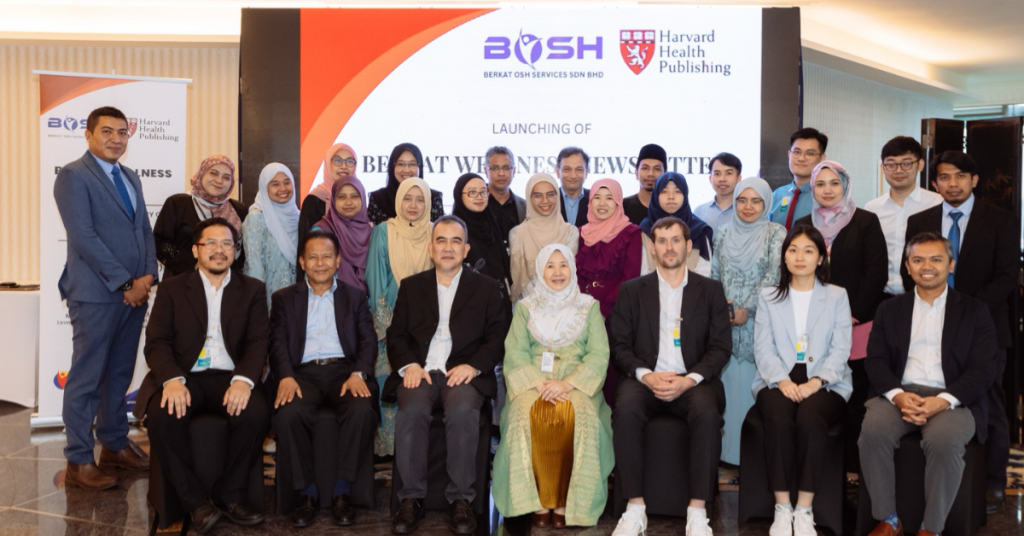
In BOSH’s case, this delay in receiving funds put a damper on growth plans, preventing them from investing in more equipment, staff, and operational clinics.
The high deposit required additionally strained their cash flow.
2. Stringent eligibility guidelines
Banks also tend to be strict on who can qualify for a loan in the first place.
The criteria for a business to qualify naturally differ from bank to bank as well as package to package, but some examples of what might crop up here in Malaysia include:
- Being owned and/or registered in Malaysia
- The business is of a certain size and/or classification (SME, sole proprietorship, etc.)
- A minimum sales revenue of a certain amount
- Being in operation for a certain amount of time
- Being within a specified age range
3. Extensive documentation requirements
The list of documents that need to be submitted to apply for a bank loan usually also tends to be quite extensive.
As an example, here are CIMB and Hong Leong Islamic Bank’s document checklists.
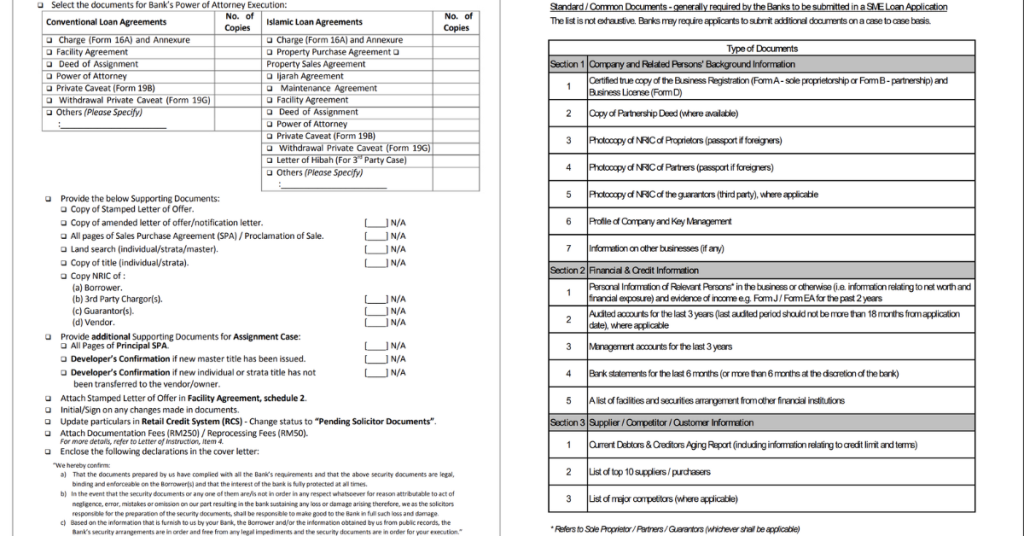
CIMB notes that poor documentation of their required business documents can ultimately lead to the loan application being rejected.
A damaged credit score, cash flow limitations, a weak business plan, or too much existing debt were also listed to be potential failure points in this regard.
Quite understandably, banks are wary of who they’re lending money to. And that’s where a guarantor comes in.
Easing the process
A guarantor is an individual or organisation that promises to pay the debts of the borrower that they’ve signed with in the event that the borrower is unable to pay back their loan.
One such example of this is SJPP, a Minister of Finance Incorporated company that administers and manages government guarantee schemes designed to assist SMEs in securing financing from banks.
Since its inception in 2009, SJPP has facilitated total financing to SMEs amounting to RM102 billion, benefiting 75,000 business owners, noted Finance Minister II Dato’ Seri Amir Hamzah Azizan in an Instagram post.
They reduce the risks for banks handing out loans to SMEs by guaranteeing a set percentage of the loan in question.
This added layer of security not only reduces qualification barriers for SMEs, but also improves the loan terms, SJPP told Vulcan Post.
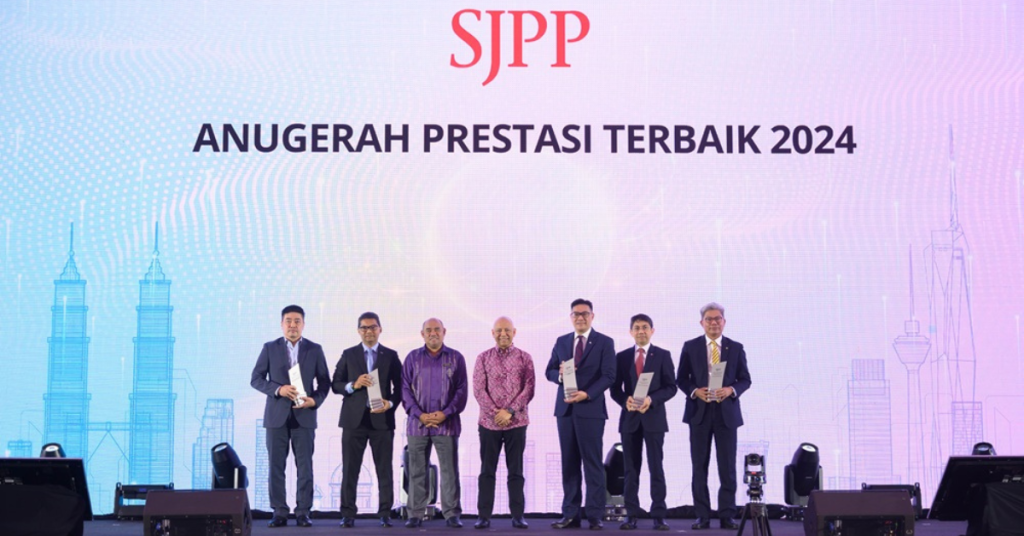
One of the schemes that the SJPP has under its belt is the Government Guarantee Scheme MADANI 2 (GGSM2).
This is meant to provide financial assistance to SMEs in the green economy, high technology, halal, and healthcare sectors.
Another would be their Working Capital Guarantee Scheme – Bumiputera (WCGS-B), which boasts a claimed 80% guarantee rate for financial institutions that they’re partnered with.
More government guarantee schemes are of course available, and the full list can be viewed on their website here.
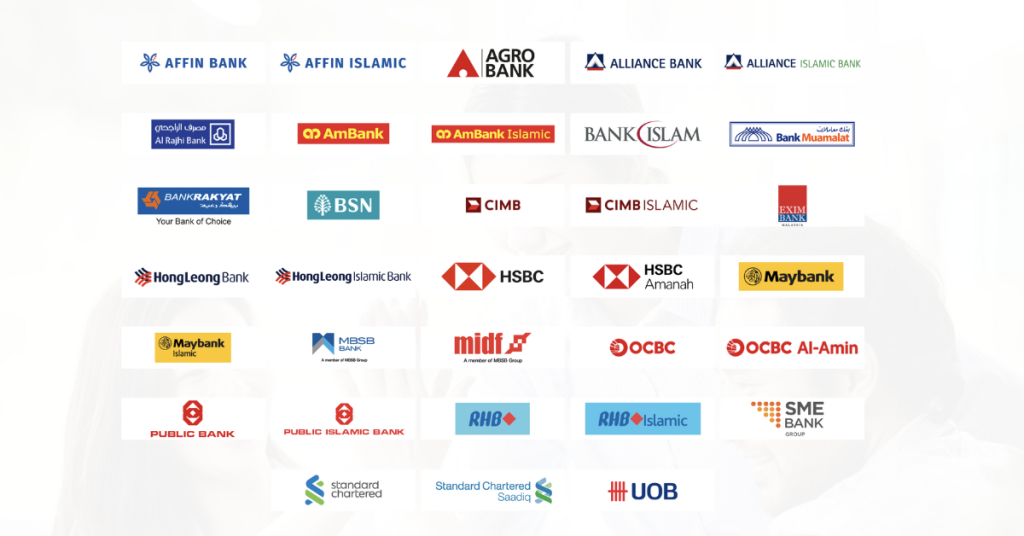
Startups and small businesses have always been an integral part of the Malaysian economy, with MSMEs accounting for nearly 97% of local establishments.
As such, government guarantee schemes administered and managed by SJPP not only keep the Malaysian economy alive, but are also conducive to the dreams of aspiring entrepreneurs, especially in the face of global economic uncertainties.
Also Read: Why Brisbane & Gold Coast should be M’sian travellers’ top Aussie destinations in 2025
Featured Image Credit: SJPP
It started from her home kitchen, now this S’porean’s macaron biz’s revenue is in the millions

Annabella Sonwelly once crunched numbers in a bank. Today, she calculates meringue ratios and perfects macaronage techniques.
It all started back in 2008, during a trip to Paris, when she stumbled upon Laduree—the high-end French patisserie renowned for its signature double-shell macarons.
The brand’s exquisite flavours enchanted her so much that it sparked a determination to recreate them.
Hence, Annabella visited over 50 patisseries across Japan and Paris, tasting, experimenting, and refining her techniques with one goal in mind: to master the art of macarons.
After a process that took over 100 tries and five years of her time, she took the leap—quitting her five-digit salary banking job and investing S$200,000 to start Annabella Patisserie in 2014 with her husband Andy Lau.
Together, the couple has claimed to have grown the brand to become Singapore’s “largest macaron manufacturer,” making revenues in the millions—the business has brought in over S$9 million in 2024.
It started from a four-room HDB flat

Annabella first started baking out of her four-room HDB flat, before moving to a shared kitchen and eventually upgrading to a small, bedroom-sized space of their own.
In the business’s early days, its biggest challenges were managing rental costs, hiring staff, and scaling up baking capacity.
“There were times when our freezer was completely empty with nothing to sell,” she recalled—those were “very painful experiences” and “costly to the business’s operations.”
Setbacks aside, however, Annabella managed to recoup her initial investment all within the span of one year.
The business has also scaled significantly over the years—in total, their operating space spans a massive 12,000 sqft, with an additional 8,000 sqft being added in 2025 as part of its growth plans. Now, Annabella Patisserie boasts a production capacity of up to 20,000 macarons per day.
The brand has also ventured into the retail space, with two outlets at Compass One and Causeway Point, and three more slated to launch by the end of the year.
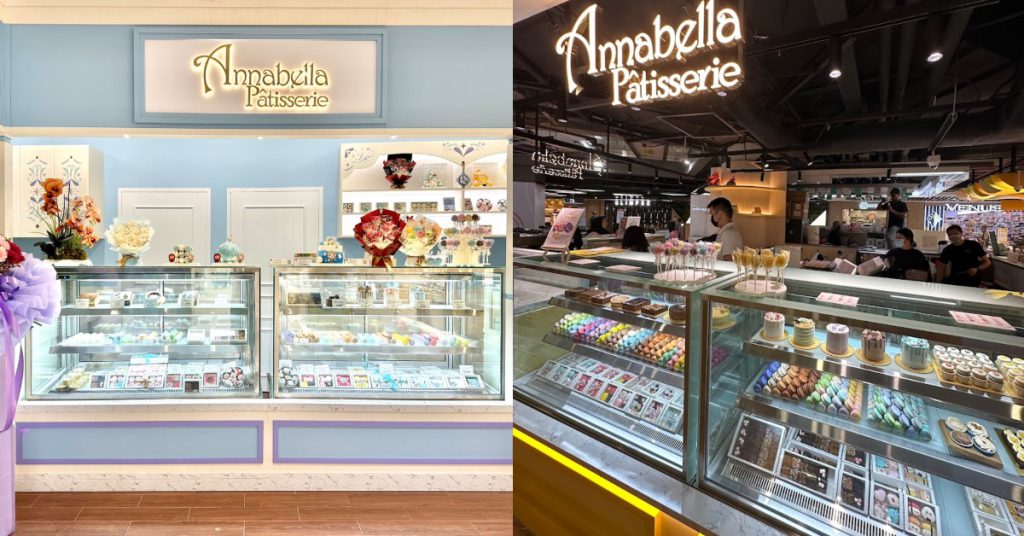
When Vulcan Post first spoke to Annabella Patisserie in 2017, it had just begun securing long-term partnerships with restaurants and five-star hotels, supplying macarons directly to these establishments.
Today, while the brand sees “strong demand” from both its B2B and B2C segments, B2B remains their “primary growth driver”—particularly in Singapore, where it supplies to “90% of all five-star hotels,” as well as airline catering and theme parks.
It has also “strengthened its presence” in the corporate gifting space and has seen strong demand, particularly during festive seasons such as Hari Raya. In March 2020, the company received MUIS halal certification, allowing it to cater Halal-certified gift sets to over 1,000 corporate clients and government ministries.
That said, Annabella still views B2C as a rapidly growing segment, particularly through e-commerce and direct-to-consumer channels.
The main challenge, she noted, lies in customer acquisition costs, which is why the company is also currently focused on optimising its digital marketing efforts to achieve a sustainable return on ad spend.
Reducing dependence on a single market
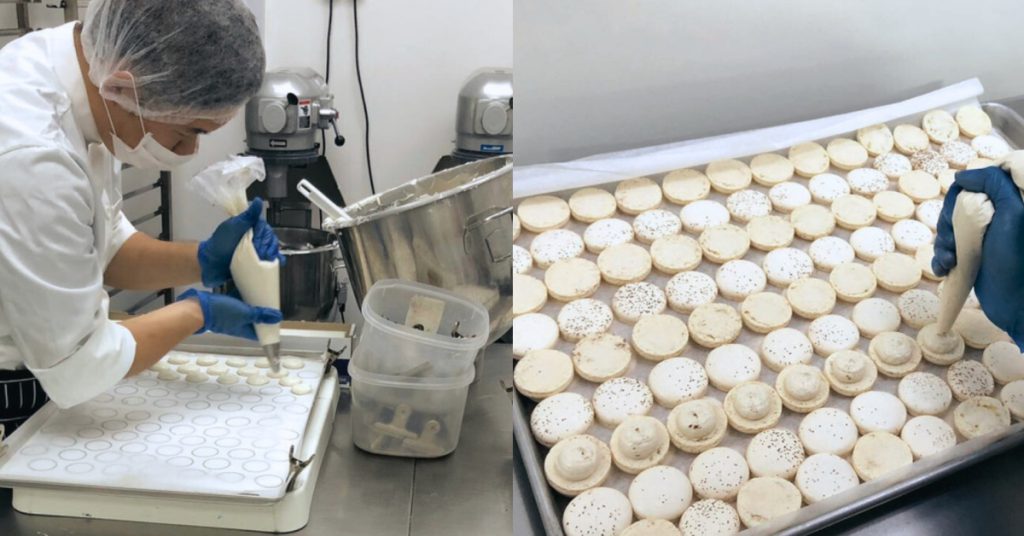
When the business first started out, Annabella focused on product development and quality control, while her husband, Andy, managed the financial and operational aspects of the business.
With a larger team handling various functions now, the couple continues to oversee their original roles, but have since doubled down on strategic growth and innovation.
To achieve scale and long-term growth, the husband-and-wife duo has realised that they would need to look beyond Singapore’s borders.
While Singapore is a great testbed for innovation, its market size is limited. The demand for high-quality, Halal-certified pastries is strong in many international markets… [and] expansion also allows us to diversify revenue streams and reduce dependence on a single market.
Annabella Sonwelly

Hence, the brand launched its first overseas kitchen in Jakarta, Indonesia, sometime around Q4 of 2023.
As the business has gained steady traction since then, Annabella Patisserie is building its retail presence in the city and is currently in talks with partners to roll out a franchise model across Indonesia. On the B2B front, it has also begun supplying to more than 10 five-star hotels in Jakarta.
Apart from Jakarta, Annabella added that the company is “in the process” of setting up a Special Purpose Vehicle (SPV) in Singapore to drive its expansion into China, where it plans to establish a food factory, retail stores and franchise networks across the country.
But why expand through an SPV—and why China?
“The SPV provides a structured way to attract investors and allocate capital specifically for our China expansion,” she explained. “It allows us to separate financial risks from our main entity while providing transparency to potential investors.”
And as for China, the rationale is clear: The country, according to Annabella, presents “enormous opportunities” due to its vast consumer base, growing demand for premium food, and an increasing appetite for international brands.
The bakery and dessert market there is expanding rapidly, and with the right strategy—local production, retail expansion, and franchising—we aim to scale quickly.
Annabella Sonwelly
Balancing quality & growth

But not everything has been smooth sailing. “One of our biggest challenges has been to manage growth while maintaining quality and service excellence,” shared Annabella.
To ensure that brand standards are consistently upheld, the company—certified under ISO 22000—has implemented stringent quality control protocols and equipped its production facility with advanced control systems. Regular product testing and customer feedback reviews also further help these efforts.
In addition, the business has also had to navigate fluctuating raw material costs and labour shortages, brought on by the evolving economic landscape.
To overcome these challenges, it has intensified its efforts on automation, securing reliable suppliers, and diversifying Annabella Patisserie’s sales channels, including building a strong digital presence.
Moving forward, the company is looking to expand its production capabilities, while also introducing new product lines under various brands.
This includes Oat Bars—a healthier oat-based snack offering functional benefits, such as collagen for beauty, protein for muscle building, and slimming ingredients.
Although the product was initially set for an earlier launch, it was delayed due to the overwhelming demand for Annabella Patisserie’s products.
“The product will debut in Singapore this year, before expanding into the U.S. via Amazon Fulfilment,” shared Annabella.
- Find out more about Annabella Patisserie here.
- Read other articles we’ve written on Singaporean startups here.
Also Read: She grew her home-based biz into a cafe that catered IU and SUJU’s S’pore shows, here’s how
Featured Image Credit: Annabella Patisserie
Singapore at 60: How does it compare to when it was 50, 40, 30, 20 & 10? Here are the numbers.

Disclaimer: Unless otherwise stated, any opinions expressed below belong solely to the author.
As Singaporeans head to the polls on May 3, it will mark the nation’s 14th General Election since independence in 1965—fittingly, in the year Singapore turns 60.
Let’s take a look at how the country has changed over that time, using the most objective method: numbers.
Bigger
The city-state has grown substantially over that time, more than tripling its population from just under 2 million in 1965 to over 6 million today.
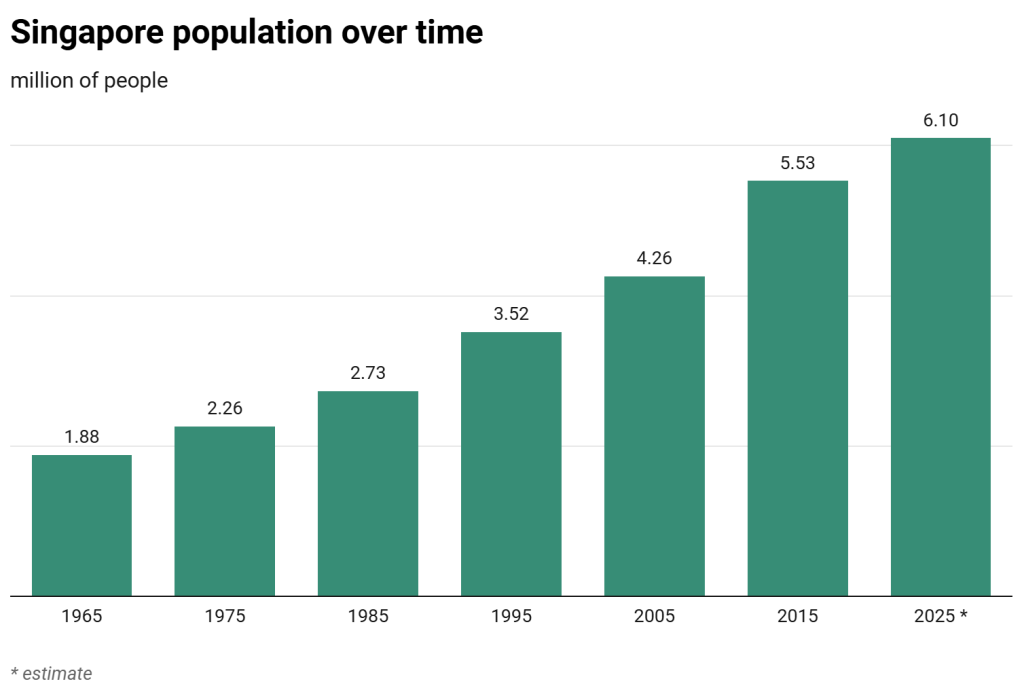
This population growth has spurred the need for major infrastructure upgrades to keep the country moving.
For the first 22 years after independence, buses were the main mode of public transport. But by the late 1980s, they were no longer sufficient.
This led to the launch of the MRT in 1987, starting with just 6 km of track and five stations between Yio Chu Kang and Toa Payoh.
Since then, it has been expanded to over 240 kilometres, becoming national pride and one of the best subway systems on the planet, which the Singapore of today cannot function without.
However, the network is still expanding, with new lines such as the Cross Island Line and Jurong Region Line currently under construction and scheduled to open in the 2030s.
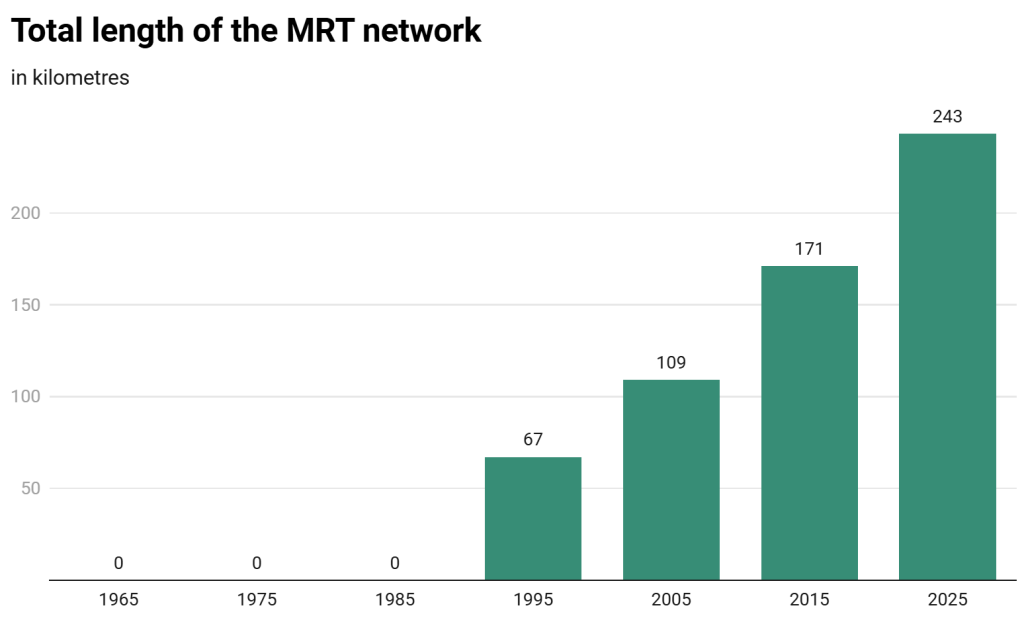
Busier
Together with physical growth, the city has become much busier, as its blossoming coincided with the golden age of 20th-century globalisation.
For more than a century, Singapore has been recognised as a key port on the trading routes between the East and West, linking Asia with Europe and beyond. In 1972, it opened its doors to nascent containerisation, with the construction of its first container terminal in Tanjong Pagar, which was also the only one in Southeast Asia at the time.
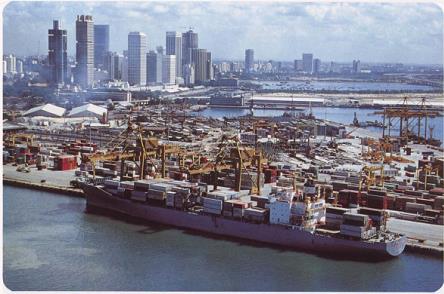
Tanjong Pagar Container Terminal between 1972 and 1983. / Image Credit: National Library Singapore
By 1975, Singapore was still handling just under 100,000 TEU (Twenty-foot Equivalent Unit) per year. However, by the mid-1980s, it broke the one million mark, and by the mid-1990s, it had exceeded 10 million TEU, as it reached the third decade of its existence.
This year, it is expected to exceed 42 million units, making it the second-busiest container port in the world after Shanghai, and the busiest transhipment port of all.
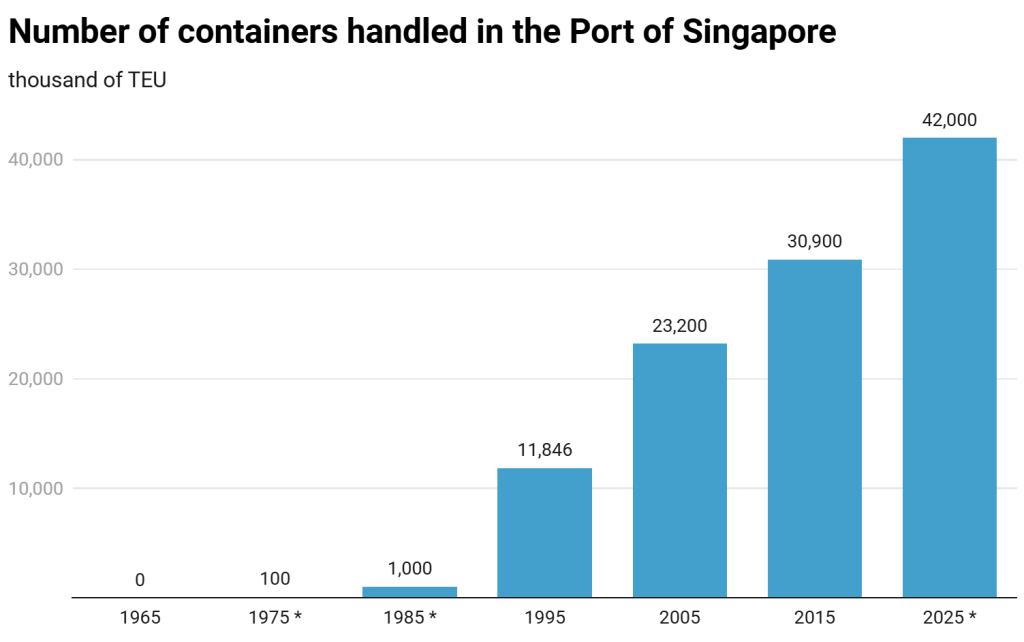
Sea wasn’t the only medium in which Singapore excelled as a hub; with the rise in popularity of air travel and logistics, it has also become one of the most important nodes in the global network.
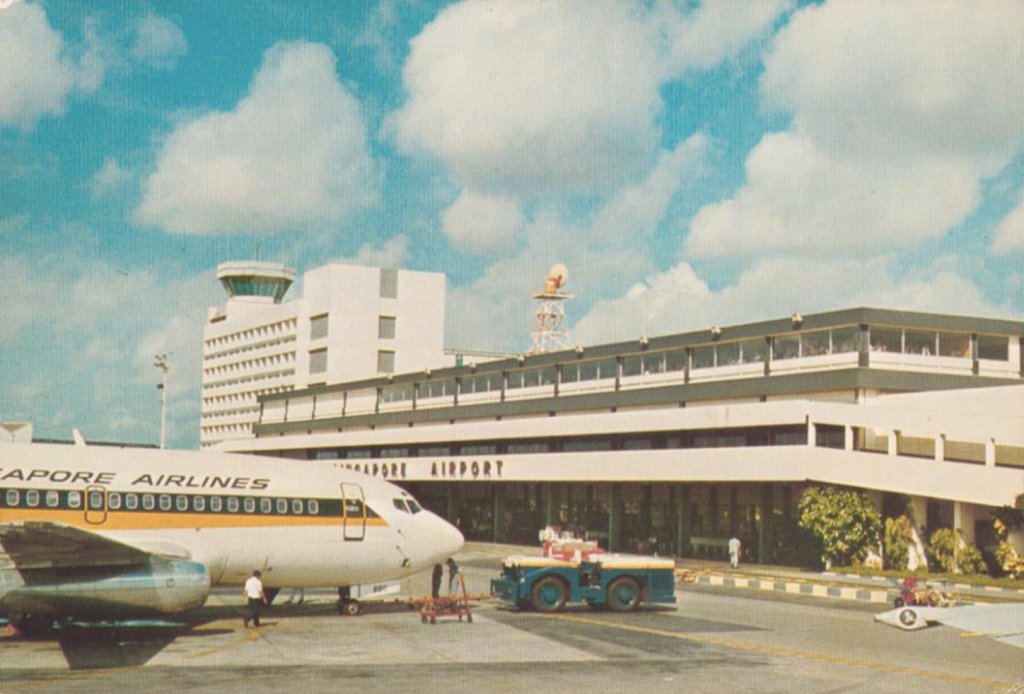
By the time of its independence, Singapore had already handled around 1 million passengers, a figure that quadrupled by 1975 and has multiplied manyfold since then.
In 2025, as it enters its sixth decade, Singapore is expected to see 70 million people pass through Changi Airport, which has been named the world’s best airport again this month.
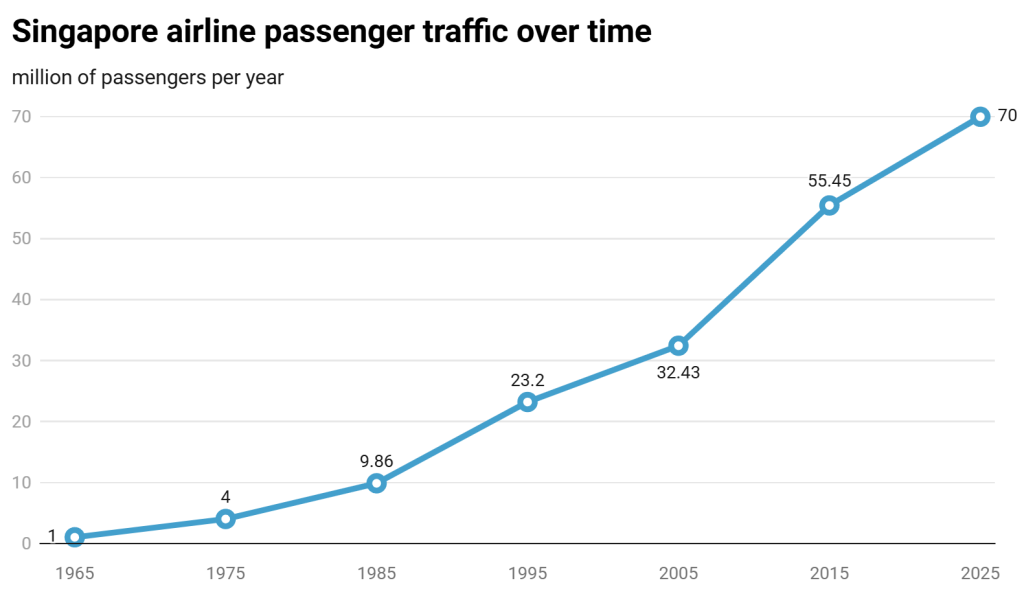
None of this would be possible, of course, were it not for the smart people in charge of the country—and an increasingly more educated and capable population.
Smarter
When Singapore was expelled from the federation with Malaysia, barely anybody had a degree here. And while their share multiplied in subsequent years, it only crossed the 10% threshold in the late 1990s, more than thirty years into the country’s existence.
That said, with modernising society and jobs that require brainpower, not the strength of one’s muscles, almost every young Singaporean pursues higher education these days, while the share of highly educated residents is expected to surpass 40% this year.
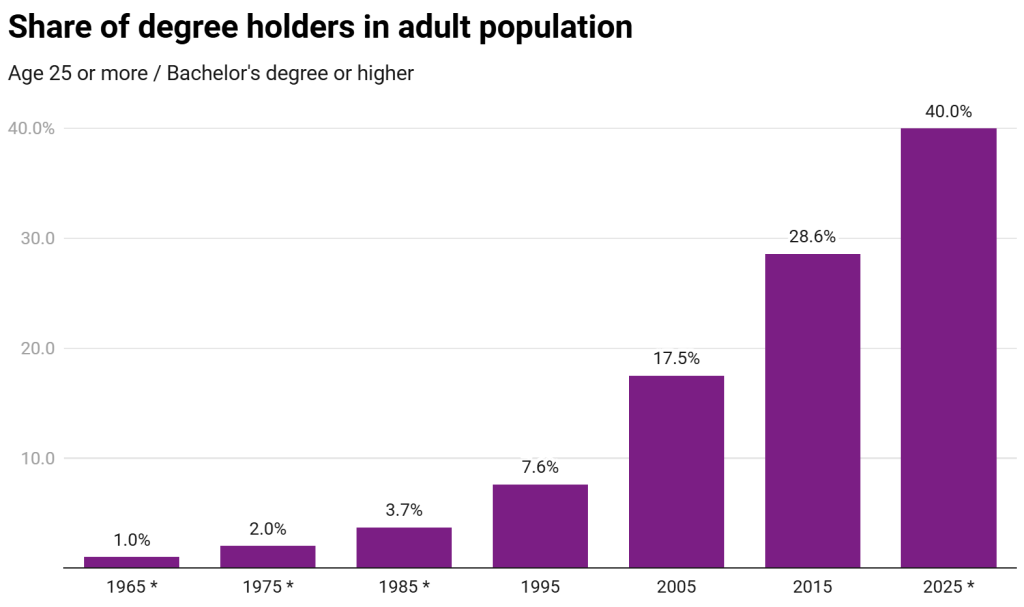
Speaking of jobs, very few locals held more prestigious and better-paid positions within the PMET group—Professionals, Managers, Executives, and Technicians—initially.
In 1965, nine in 10 Singaporeans held modest, manual jobs. But with the rise of globalisation, the nature of work—and the economy—transformed dramatically.

By the late 2000s, over half of Singapore’s local workforce had moved into PMET roles. That share is set to hit nearly two-thirds this year, as fewer Singaporeans take on the jobs their parents once held, many of which are now filled by lower-cost foreign labour.
And speaking of money…
Wealthier
When you combine all of the above, it is no surprise that Singapore’s economic performance has improved with both quantitative and qualitative growth over the years.
Starting at just S$517 per head in 1965, the city-state had quintupled it by 1975 and then multiplied that by 10 in the following two decades.
When it was half its current age, it reached a respectable S$25,000 in Gross Domestic Product per person; however, it then defied the patterns that dictate an increasingly developed country should see its economic output slow down over time.
As of 2025, Singapore is expected to produce close to S$94,000 per person, and surpass the S$100,000 mark in 2027.
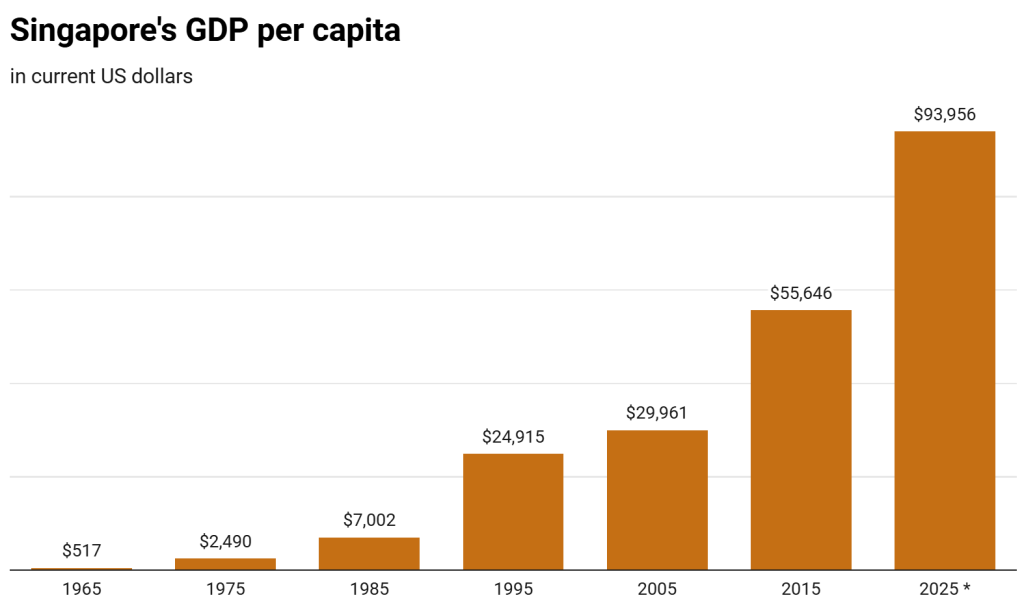
Crucially, this economic growth is reflected in the increased incomes of many Singaporeans, who have seen their earnings multiply over the years.
Domestic median household income from work surpassed S$11,000 last year, having risen from just S$200 in 1965 and from under S$5,000 just twenty years ago.
This is while the Singapore dollar has remained very strong, which is what you can feel anytime you head across the border to Malaysia. Once traded 1:1, the SGD is now worth over three ringgit.
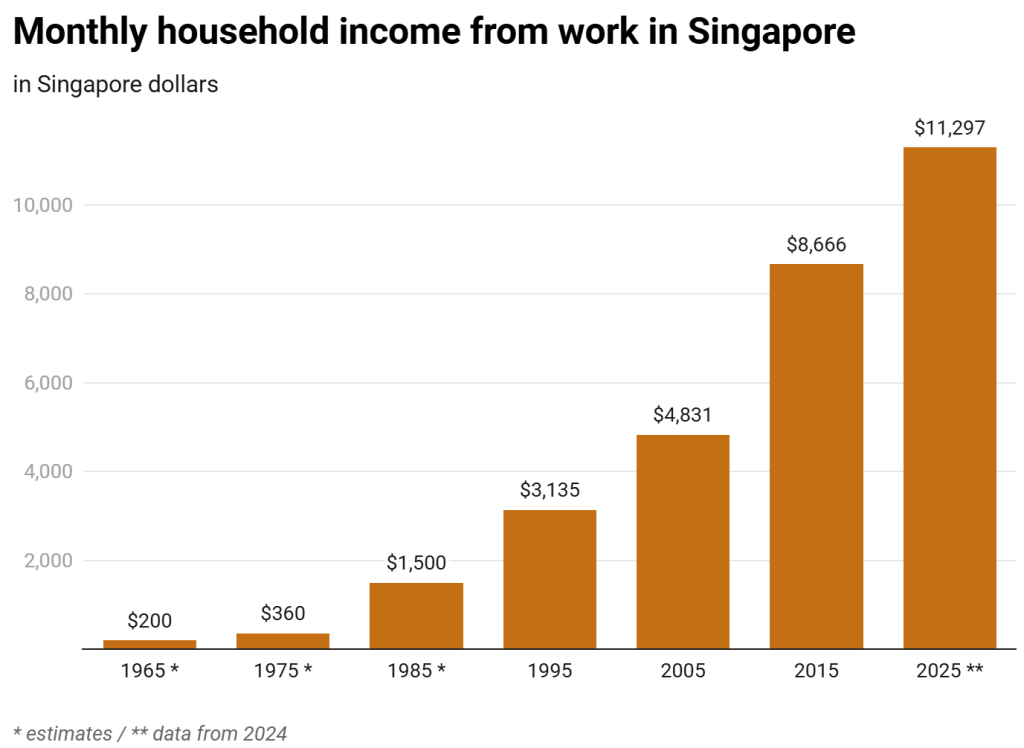
Most importantly, Singapore’s growth is still strong and shows no signs of stagnation, despite the fact that the city-state has fewer competitors left in the global economy.
What began as a small, ex-British colonial port in the Far East, with not a very well-educated population and limited infrastructure, has now evolved into a global success story and one of the most advanced and wealthiest nations on the planet in 2025.
- Read other articles we’ve written on Singapore’s current affairs here.
Also Read: If he wins big this year, Lawrence Wong may be Singapore’s most resilient Prime Minister yet
Featured Image Credit: Richie Chan/ Shutterstock.com
After 117 yrs of doing business in M’sia, Siemens launches new HQ & experience centre in KL

The year was 1847 when Siemens first got its start. It took a couple of decades, but the German company eventually made its way into Malaysia.
Specifically, it was 1899 when Siemens & Halske first sent representatives to explore opportunities in the Straits Settlements. It took nearly another decade in 1908 until Siemens made its first recorded sale in Malaysia.
So many things have happened since. Siemens began supplying products to Malaysia from 1967, and the Siemens Semiconductor Group eventually set up its first factories in Melaka and Penang, creating some 1,500 jobs, contributing greatly to the country’s economy.
117 years since its first recorded sale, Siemens Malaysia has now launched its HQ at The MET, a certified green building in Mont Kiara, marking yet another significant milestone of the company’s history in Malaysia.
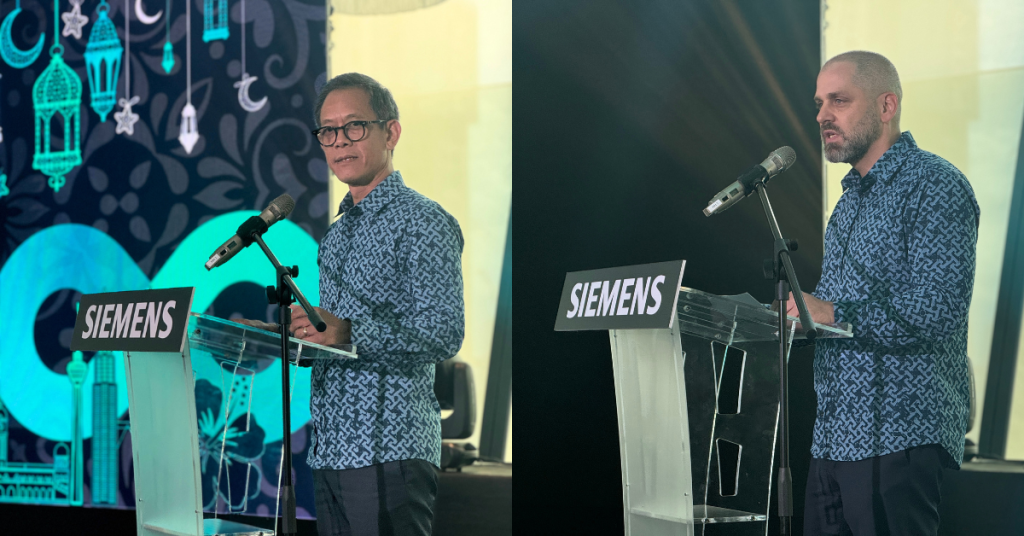
But you may be wondering…
Who’s Siemens?
Having been around for so long, it’s not surprising that some people may be confused about what exactly Siemens does. That’s because they do a lot.
In their own words, Siemens Malaysia Sdn Bhd (SMSB) is a leading technology company with “comprehensive products and solutions, and emerging technologies for various markets in the Malaysian economy, under its Digital Industries and Smart Infrastructure businesses.”
It focuses on the areas of intelligent infrastructure for buildings, grids and distributed energy systems, more resource-efficient factories, resilient supply chains, as well as automation and digitalisation in the process and manufacturing industries.
The company creates technology with purpose, adding real value for customers. By combining the real and the digital worlds, Siemens empowers its customers to transform their industries and markets, helping them to transform the everyday for Malaysians.
“Drinking our own champagne”
Siemens has long been a proponent of sustainability, and the move to The MET—a certified green building—is a representation of that. It shows the company’s commitment to scaling sustainability impact in its core operations.
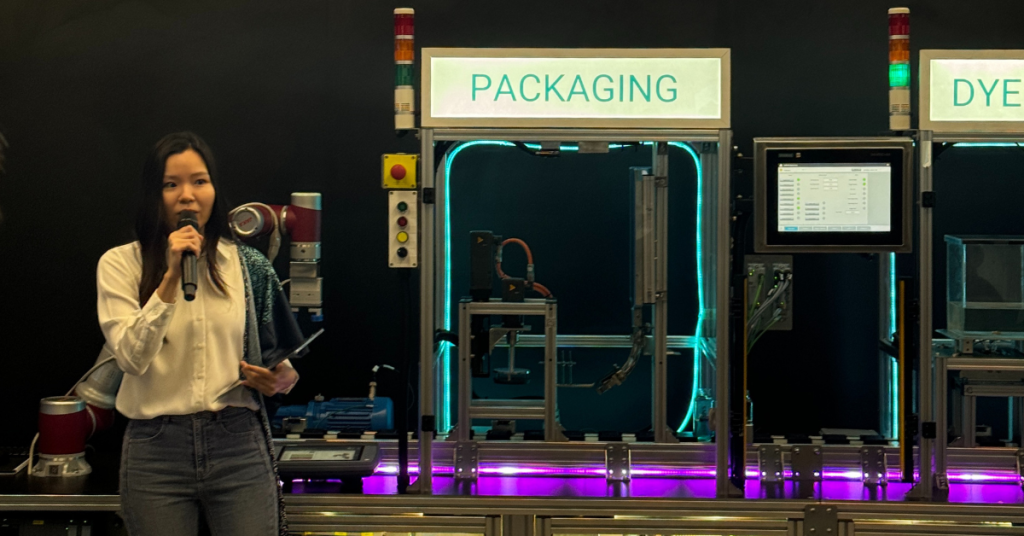
“This is about walking the talk,” Tindaro Danze, President & CEO of Siemens Malaysia stated. “We’re not only providing a state-of-the-art work environment for our employees, but also demonstrating our commitment to decarbonisation through the choices we make—right down to the environment we operate in.”
The new headquarters is equipped with Siemens’ proprietary Building X digital platform that runs applications to manage building operations.
It empowers data-driven decisions to improve sustainability, operations, and performance by optimising areas such as energy use, user comfort and safety, maintenance and security.
A centre of innovation
Aside from the office, the Siemens location is also home to SXEC—the Siemens Xcelerator Experience Center.

We got to experience the centre ourselves, which is typically visited by customers of Siemens so they can explore, experience, and collaborate with Siemens’ cutting-edge technologies in an immersive and dynamic way.
The SXEC center also functions as a central hub for customers to explore, experience, collaborate and network in a dynamic environment alongside industry peers.

The space features some of Siemens’ top digitalisation solutions, including digital twinning (also known as virtual commissioning), augmented reality solutions, virtual reality simulation for training purposes, and much more.
Shaping the future of our nation
Looking back, there’s no doubt that Siemens has been a part of core developments in our country, such as our LRT systems and semiconductor landscape.
And they’re not stopping there. Beyond tech developments, they’ve also invested into key CSR initiatives. Specifically, they are focusing on youth education and STEM engagement.
For one, there’s the Girls in Engineering & Technology programme. In collaboration with the Girl Guides Association Malaysia and STEM Academy Malaysia, Siemens will mentor young women aged 13 to 17 by providing access to hands-on workshops, engineering tools, and software simulations.
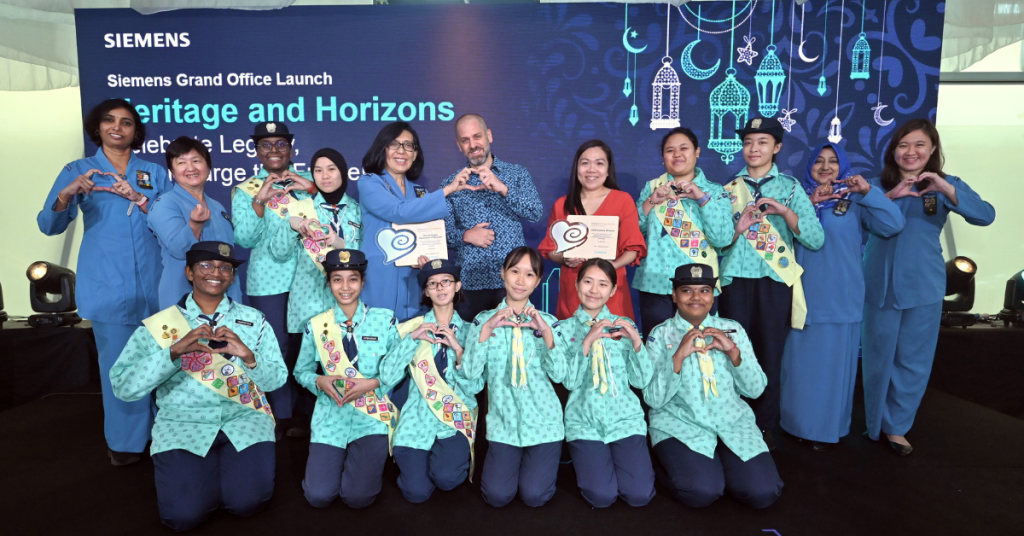
Secondly, there’s the STEM Edge Competition 2025. This is a national engineering challenge where students apply Siemens’ industrial design software and AI tools to solve real-world digital challenges.
The programme will be co-organised with STEM Academy Malaysia, led by Principal Charlene Ong.
“These initiatives reflect our effort to inspire and equip the next generation,” CEO Danze said. “The global battle for talent starts at home, and we must begin by breaking down outdated stereotypes—especially those that prevent girls from entering STEM careers.”
With its new headquarters and social investments, Siemens Malaysia reinforces its role not only as a technology leader but also as a purposeful contributor to the country’s sustainable and inclusive future.
- Learn more about Siemens Malaysia here.
- Read other articles we’ve written about Malaysian startups here.
Also Read: A powerful AI computing solution for enterprises, by this M’sian biz with NVIDIA & Dell
Featured Image Credit: Siemens Malaysia
This M’sian left a 10-yr career to build a pineapple tart biz using his mum’s 40+ Y/O recipes
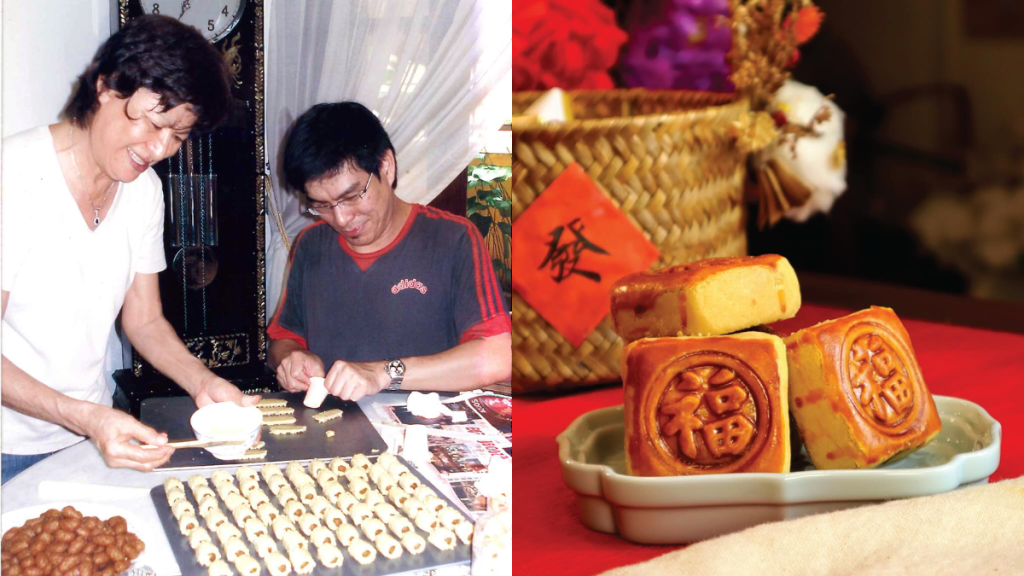
Many of us would do much in the way of carrying on the family legacy, sharing the teachings and stories of our parents with our children and grandchildren.
After all, is that not how progress is made?
David Wong, however, takes it one step further.
From home kitchens and family recipes
“My earliest memory of baking goes back to when I was around 9 or 10, helping my mother prepare pineapple tarts for Chinese New Year,” said David.
Since his days of cutting dough strips to form the lattice topping of those tarts, to pursuing a Diploma in Hotel and Catering Management, David has always been guided by a deep love for his mother and the traditions they shared.
“Though I didn’t go into the hospitality line immediately, I built a strong career and climbed the corporate ladder wearing many hats. But over time, I felt a growing disconnect—I couldn’t imagine spending the rest of my life in a job that didn’t align with my passion,” shared the 51-year-old.
After 10 years working in property development, David left his career behind and returned to the kitchen, starting small by baking from home and reconnecting with the joys and values his mother had passed down, before being further inspired by a trip to Taiwan where he learnt about square pineapple tarts.
And so, David launched Baker Dave in 2012, a small bakery with a total capital of RM300,000, sourced from his family and business partner, which went into covering rental, renovation, and setup costs, plus sustaining operations for a year, which included staffing, supplies, and overheads.
Two years later, David rebranded his business to Nooks by Baker Dave, a bakery-cafe which he started with just one team member—a deaf and mute worker who David said was “sent into his life by the Almighty,” as it taught him patience, humility, and the value of leading with compassion, shaping the way he runs his business today.
The cafe quickly gained a loyal following of regulars, who David claimed to include mid-level professionals, local artists, politicians, and even royalty.
A tribute of love
Finally, in November 2019, David renamed his cafe to Swee Bee, a tribute to his now 76-year-old mother’s legacy, and the values and lessons she’s passed down that have shaped David’s life and career.
Throughout these transitions, however, Swee Bee has always been an ever-present figure guiding David through his ventures and operations.
“The base recipe of our pineapple tart is 100% my mother’s original—the very one I learnt at her side as a child. I’ve kept it almost entirely unchanged, with one small tweak: I removed the star anise and cinnamon from the pineapple paste.”
“While they were part of her traditional recipe, I found that the spices didn’t suit the wider palate, so I made the call to simplify the flavour. Everything else—from the dough to the texture of the filling—remains as she taught me,” he said.
Another major change is the shape of the pineapple tart itself: square, representing a first in Malaysia which got the brand listed in the Malaysia Book of Records.
The square isn’t just a visual novelty—it’s rich with meaning. In Chinese culture, the square symbolises stability and wealth and also represents the four corners of the world: North, South, East, and West.
As a proud Malaysian Chinese, this symbolism resonates deeply with me. The Chinese community is spread across the globe, yet no matter how far we go in search of success, we always return home—for reunions, for love, for tradition.
That homecoming, that gathering, is symbolised by a circle within the square—the family reunion at the heart of the world.
Spreading the love
The brand’s recognitions don’t just end there though, with Swee Bee’s pineapple tarts earning a gold medal at the Malaysia Culinary World Cup. They were also part of the world’s largest cooking competition, listed in the Guinness World Records.
“These accolades are not just wins—they’re a testament to the dedication, craft, and quality we bake into every batch,” David added.
Since receiving these accolades, the brand has grown significantly, now participating in trade fairs, collaborating with various media from Sin Chew Daily to Astro, and becoming a household name around the country.
“I want people to know that Swee Bee is more than just a name or a brand. It’s a tribute to my mother—the woman who sparked my love for baking and instilled in me the values of hard work, precision, and deep respect for tradition. Everything I’ve built today carries her spirit, her strength, and her warmth.”
“Today, her name on the signboard means more than just branding, it’s a daily reminder of where this journey began. Her values, her recipes, and her life lessons continue to shape how I craft each tart, how I lead my team, and how I treat every customer. It’s a living legacy, one that I’m honoured to carry forward.”
Also Read: Why Brisbane & Gold Coast should be M’sian travellers’ top Aussie destinations in 2025
Featured Image Credit: Swee Bee
This S’wakian quit engineering to pursue F&B, now his Kuching restaurant has expanded to KL
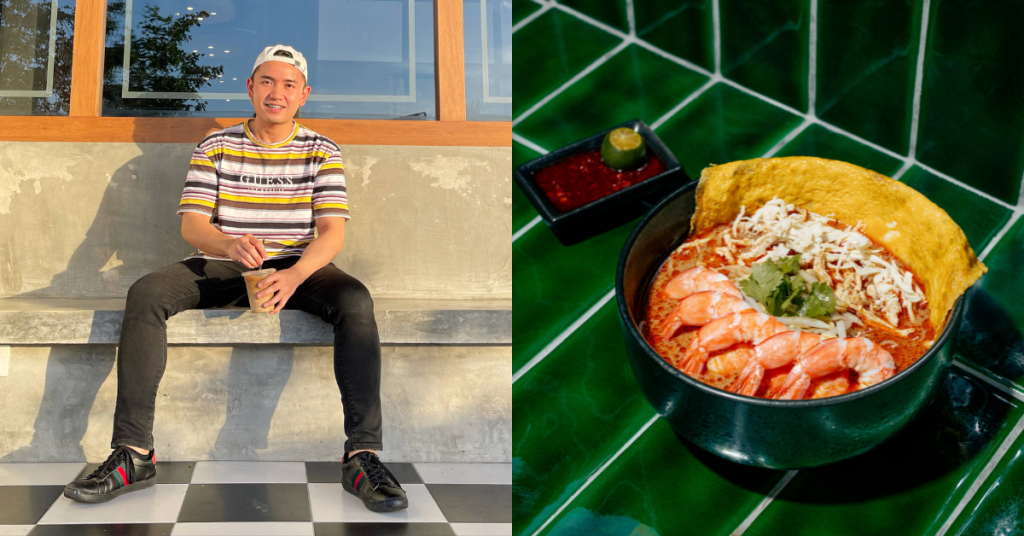
Located in SS4, Oregano Cafe is a cosy fusion restaurant created by an ice cream cafe by the name of Affogato.
Interestingly, though, Affogato is not in the Klang Valley area, but in Kuching, which is where the OG Oregano is still standing today.
Behind Oregano is Hamizan Zaidi (Mizan), who also hails from Kuching, Sarawak.
“Food has always been a big part of my life,” Mizan expressed. “I’ve always had a soft spot for cafes and how they create space for community and inspiration.”
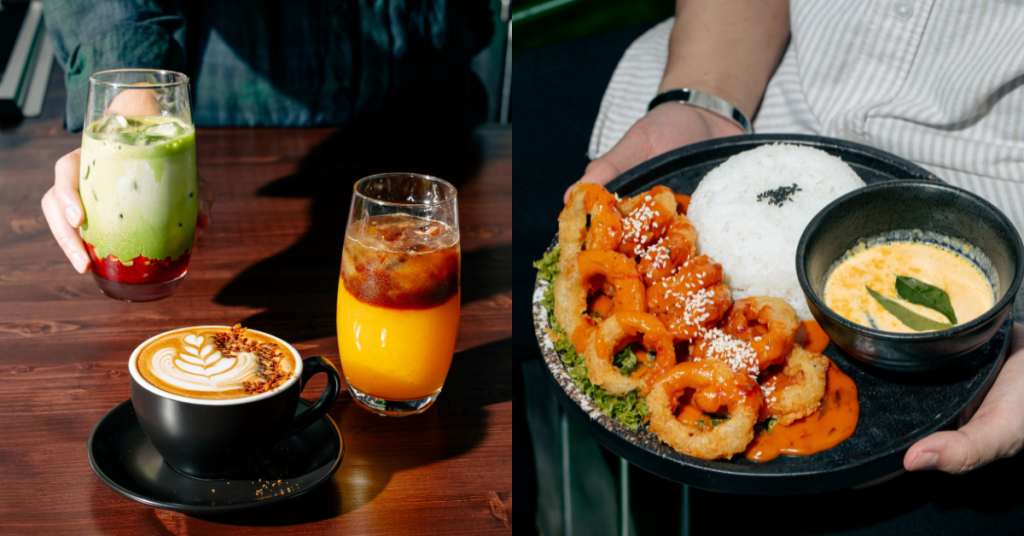
Although his passion for cooking and baking has always been strong, he opted to study geological engineering.
Post-graduation, he began his career in construction, working as a project engineer for about a year.
But he soon realised that that construction just wasn’t something he could see himself doing in the long run. Thus, he decided to resign and start his first cafe in 2019.
A sweet start
His first cafe, named Affogato, opened its doors in April 2019.
“As a coffee and ice cream lover, I thought what better way to bring those two passions together? Affogato became a space where I could be creative, experiment with new baked goods, and rotate weekly specials,” he told Vulcan Post.
“Being able to do something I love while making a living out of it was the motivation I needed to start the business.”
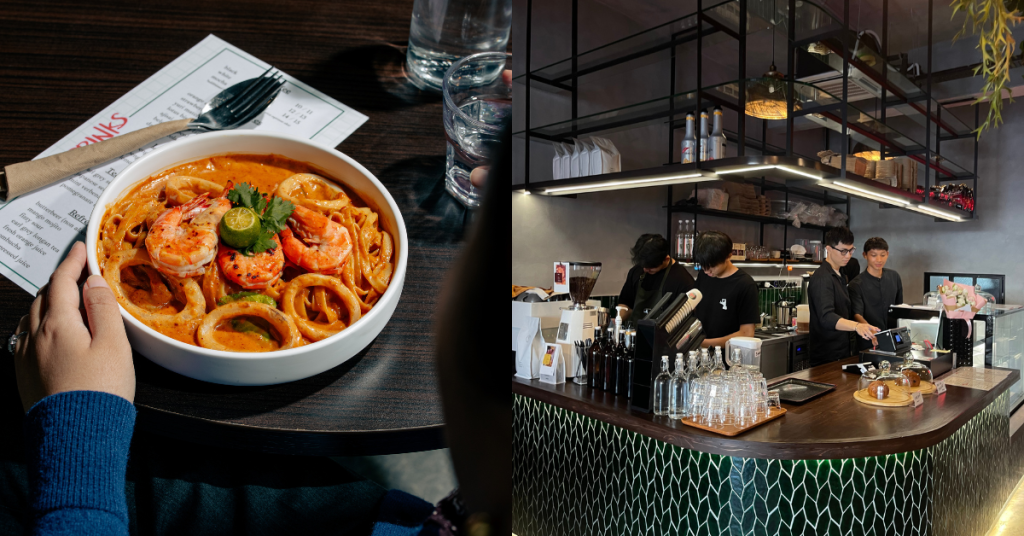
From there, came Oregano Café. Established in 2021, the business was somewhat “forced” by the pandemic.
Given the uncertainty of that era, Mizan was rethinking his business model and realising that ice cream alone wasn’t sustainable. Thus, he started experimenting with more savoury offerings.
That naturally evolved into what is now Oregano.
Offering comfort food with a twist, Oregano’s signatures include fusion pastas that incorporate local ingredients such as bunga kantan, daging salai, gula apong, and more.
Dishes are developed inhouse, curated collaboratively with Mizan and his small but passionate kitchen team.
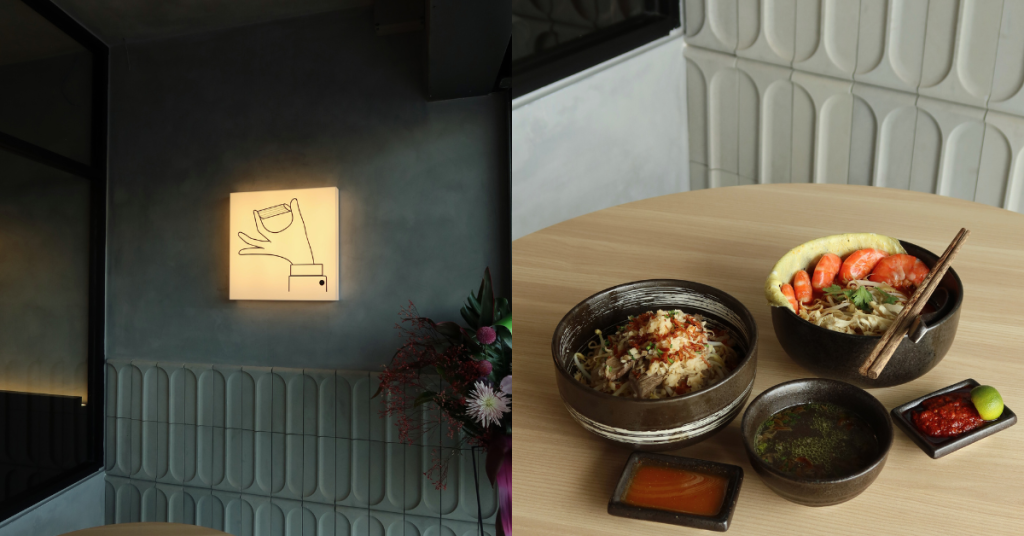
From Kuching to KL
After five years running his F&B brands in Sarawak, Mizan decided it was time to expand.
“Opening in KL was a big leap, but it felt necessary to grow,” he expressed.
After all, he had always dreamt of bringing the team’s story to a larger audience, and KL looked to be the perfect platform. Believing in their solid following that also included KL-based customers, Mizan felt validated to take the next step.
To kickstart Oregano, Mizan himself moved to KL, though he flies back to Kuching as often as he can. He does this in part to keep quality consistent across his outlets.
“Consistency is always a challenge, but we focus on clear SOPs, proper training, and a strong team culture,” he explained. “I make it a point to stay closely connected with both teams to ensure that our vision and values are felt throughout the entire operation, not just by the management.”
Consistency is key when it comes to quality as well as brand identity. However, even though both Oregano outlets offer fusion pasta, the menu does deviate slightly.
In the KL location, Oregano serves up Sarawakian dishes such as Sarawak Laksa and Mi Kolok, a wholesome reference to the business’ roots.
“We also adjust seasonal items depending on ingredient availability, as some items we use in Sarawak aren’t as easy to source in KL,” Mizan added.
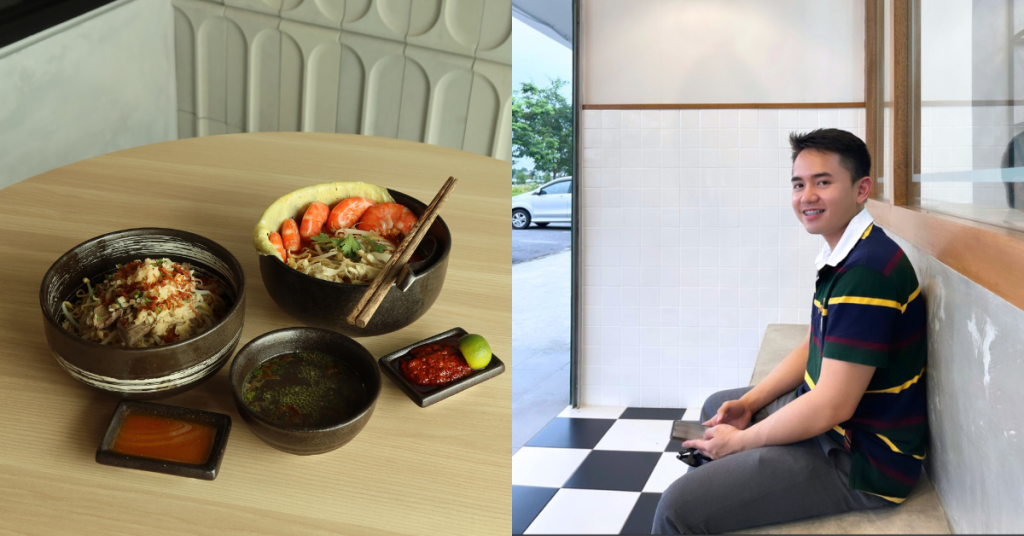
Compared to Kuching, though, KL is much more fast-paced, competitive, and expensive. One big challenge for the team was figuring out how to stand out in a very saturated market.
“As a relatively unknown brand here, we had to learn quickly how to market ourselves and build relationships within the local scene. Financial pressure, especially post-pandemic, was very real,” he said.
To introduce their brand to a wider audience, the team has participated in events and pop-ups while collaborating with other brands.
And of course, they focus on doing what they do best—serving good comfort food with soul, maintaining a strong brand identity, and offering great service.
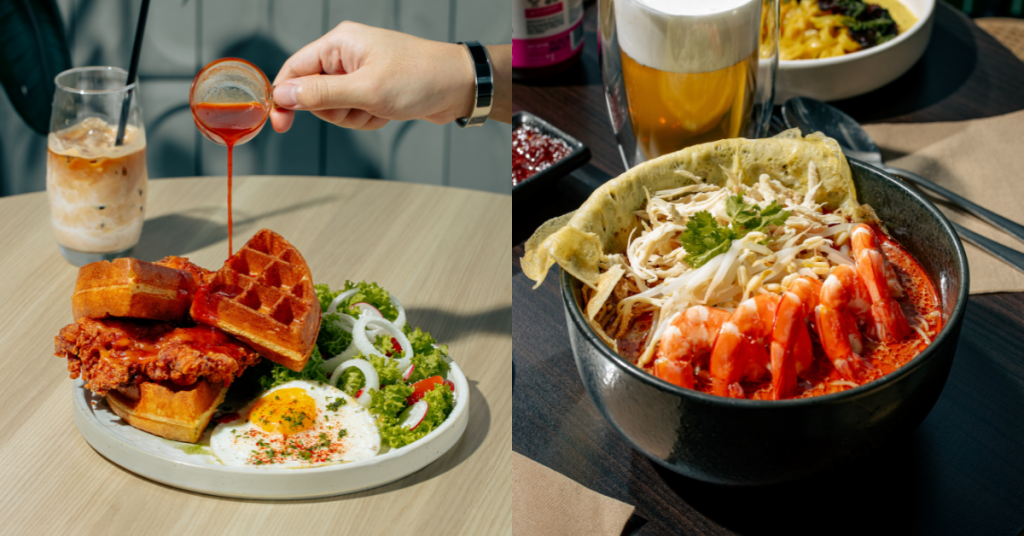
“We don’t try to be everything to everyone, which helps us stay grounded,” Mizan said.
Looking ahead
Especially due to the expansion, the Oregano team hasn’t quite arrived at its break-even point just yet. But Mizan reports that they’ve made steady progress and have been learning a lot along the way.
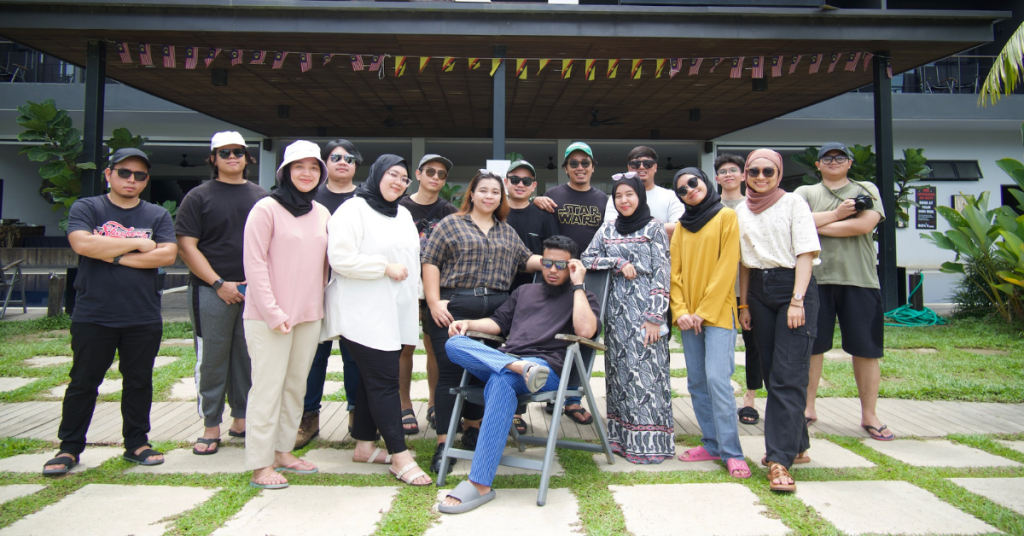
“The KL market is competitive and high-cost, but we’re confident that with the right strategy, especially around marketing, collaborations, and customer retention, we’ll get there one day,” he shared.
Looking ahead, the founder aims to stablise the KL outlet and build stronger brand visibility. From then onward, he has dreams of expanding into the retail market by launching Oregano’s own line of sauces, spice blends, and ready-to-eat meals.
“The strategy is to stay resilient and by having a very solid team,” Mizan said.
Also Read: Why Brisbane & Gold Coast should be M’sian travellers’ top Aussie destinations in 2025
Featured Image Credit: Oregano Cafe

